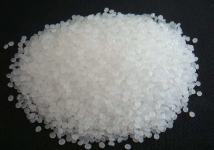read: 679 time:2025-04-15 19:30:09 from:化易天下
Acetone, a simple organic compound with the formula ( C3H6O ), is a colorless, volatile, and flammable liquid. It is one of the most common industrial solvents used worldwide, but it is also found in a variety of everyday products and natural sources. Understanding "where is acetone found" is crucial for industries, researchers, and consumers alike. In this article, we’ll explore the various sources and applications of acetone in detail.
Acetone is not just an industrial product; it also occurs naturally in the environment and in living organisms. In the human body, acetone is produced as a byproduct of metabolism, particularly during the breakdown of fats. This process is heightened in conditions like fasting, diabetes, or low-carbohydrate diets, leading to elevated acetone levels in the blood, a state known as ketosis. Beyond the human body, acetone is also found in small amounts in plants, trees, and forest fires, as it is released during the breakdown of certain organic materials.
When asking "where is acetone found," it’s essential to consider its industrial production. Acetone is predominantly produced through the cumene process, where it is a byproduct of phenol manufacturing. The global production of acetone is extensive, with millions of tons produced annually. Acetone’s primary industrial use is as a solvent in the manufacturing of plastics, fibers, and pharmaceuticals. It is also crucial in the production of methyl methacrylate and bisphenol-A, which are precursors to important polymers and resins.
Acetone is widely present in everyday consumer products, making it a common substance in households. One of the most familiar uses is in nail polish removers, where its effectiveness in dissolving nail polish makes it an indispensable ingredient. Acetone is also used in paint thinners, adhesives, and cleaning agents due to its ability to dissolve a wide range of substances. Additionally, certain cosmetics and skin care products contain acetone, particularly those designed to cleanse and remove oils.
In terms of environmental presence, acetone is found in the atmosphere and water bodies, usually as a result of industrial emissions, vehicle exhaust, and the natural breakdown of organic materials. Although acetone is generally considered to have low toxicity, its widespread presence raises questions about safety, particularly in occupational settings where exposure levels can be higher. Understanding where acetone is found in the environment and its potential impacts is crucial for developing safety guidelines and regulations to protect human health.
In summary, "where is acetone found" spans a broad spectrum of natural and industrial sources. From being a natural byproduct in the human body to an essential solvent in industrial processes and a common ingredient in consumer products, acetone’s presence is ubiquitous. While it serves many useful purposes, awareness of its environmental and health impacts is essential for safe and responsible use.
Prev: where is acetone available
Next: where is xylene found

Jincheng Petrochemical's 300000 ton polypropylene plant successfully trial production, 2024 polypropylene market analysis

The ABS market remains sluggish, what is the future direction?

Market differentiation of bisphenol A intensifies: prices rise in East China, while prices generally decline in other regions

The production method and process flow of silicone acrylic lotion, and what are the common raw materials